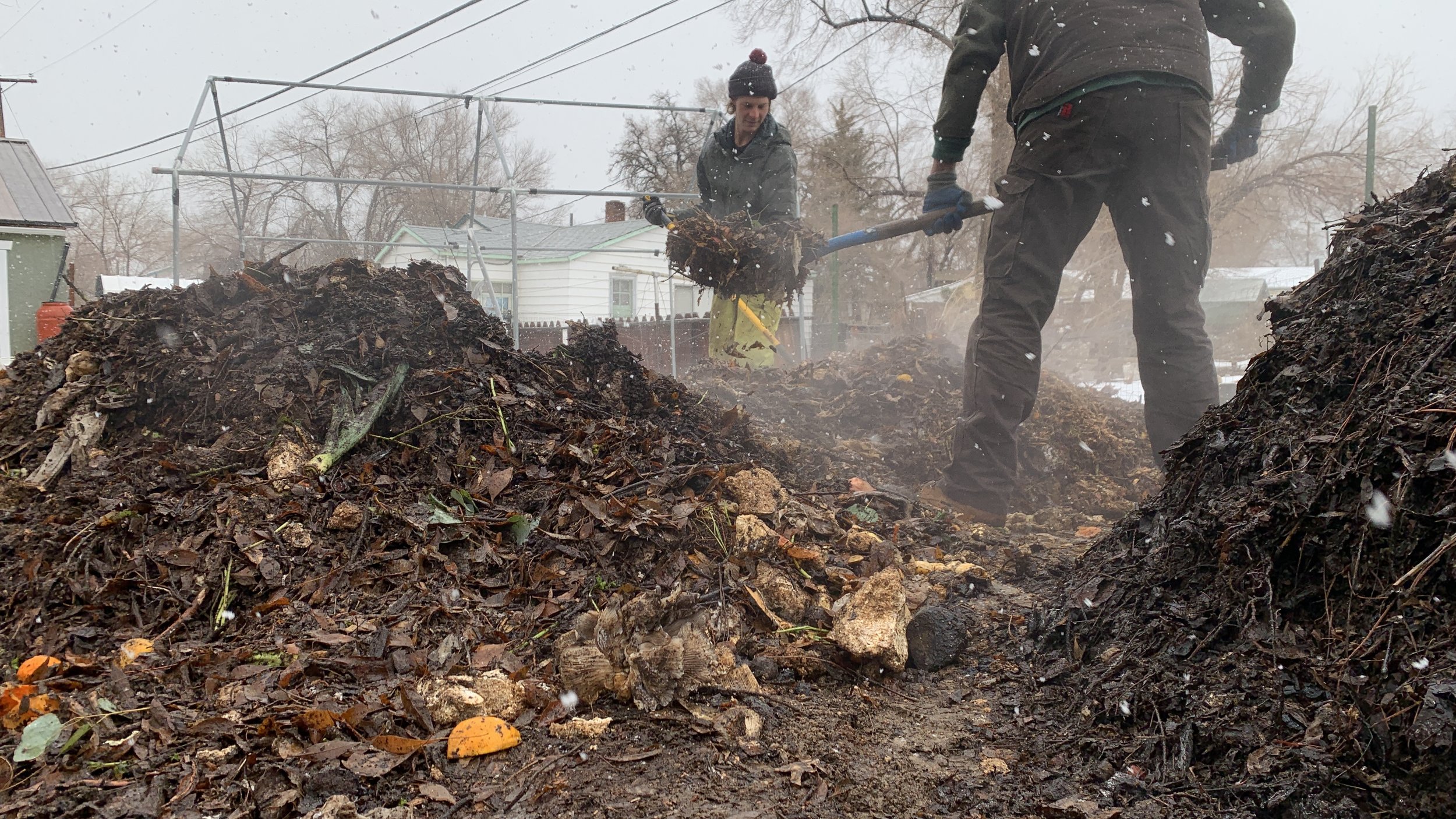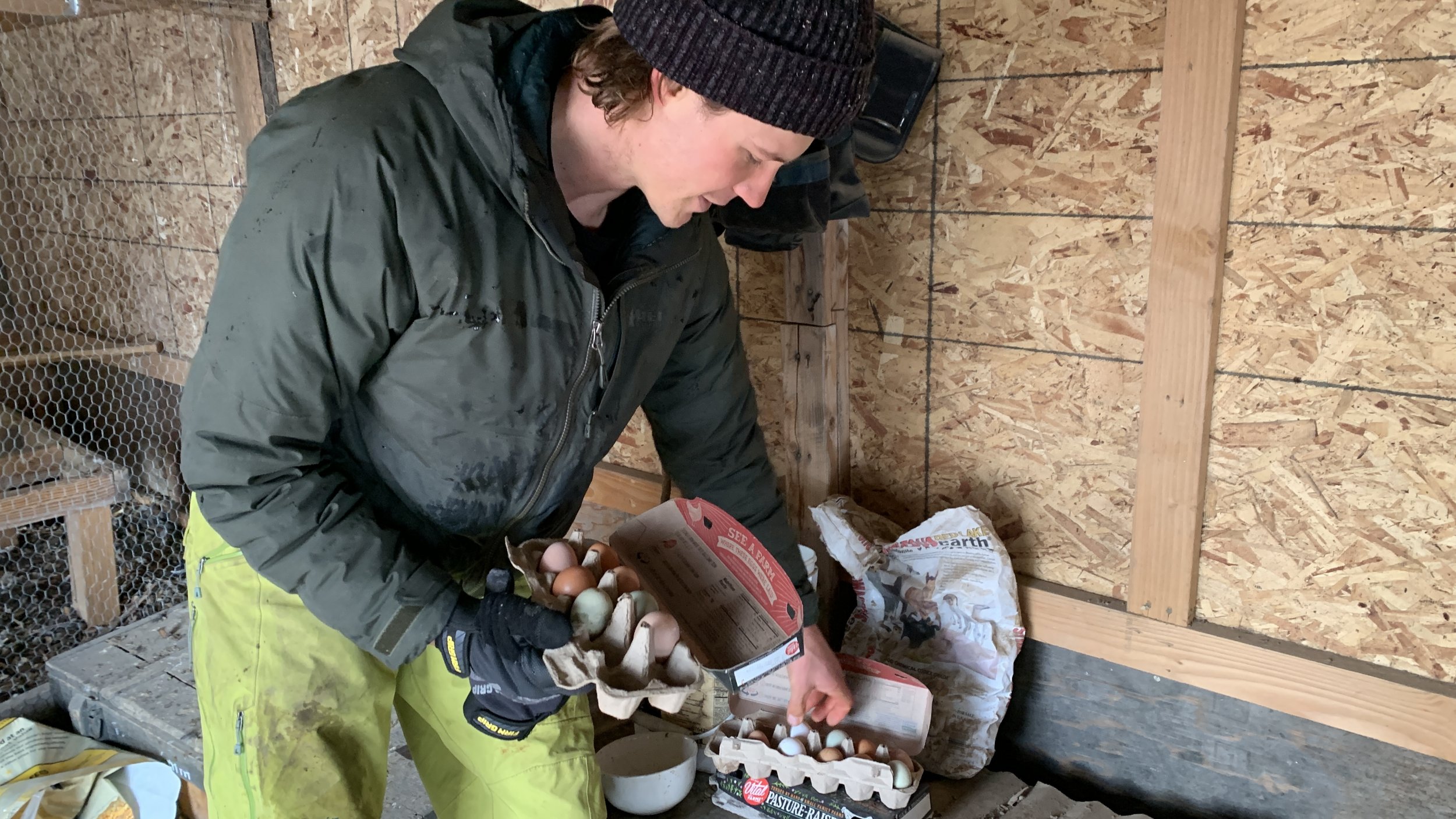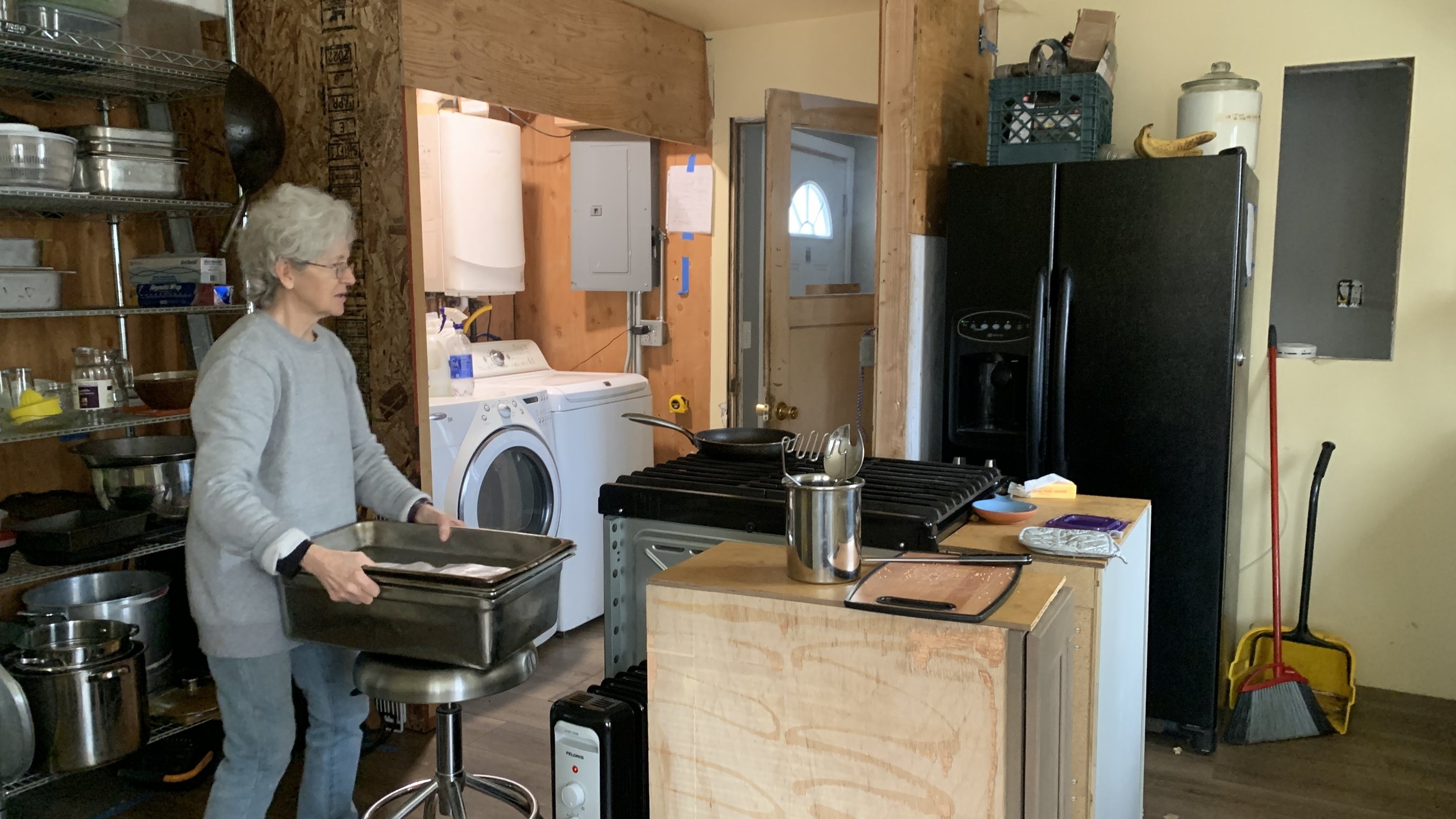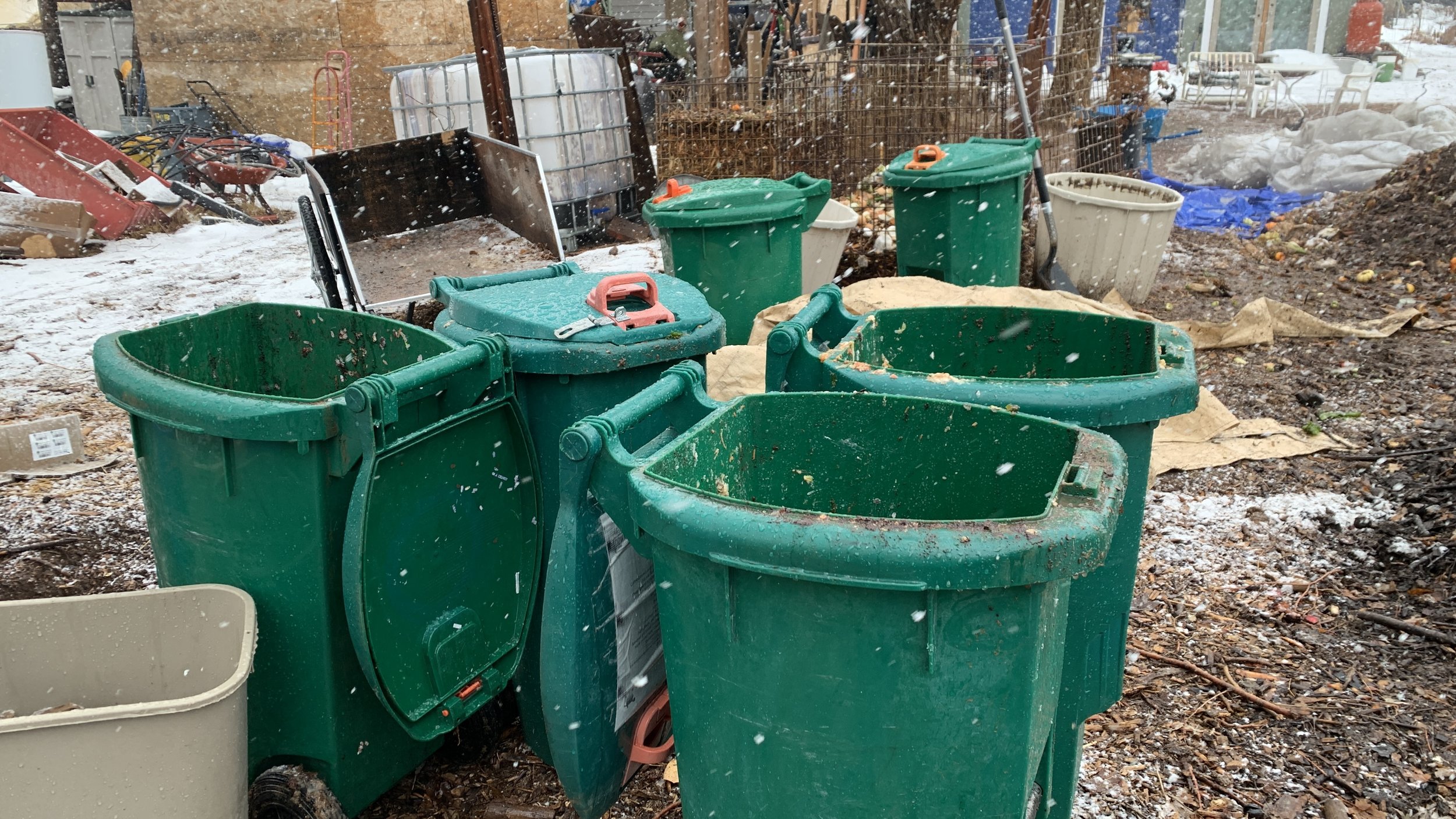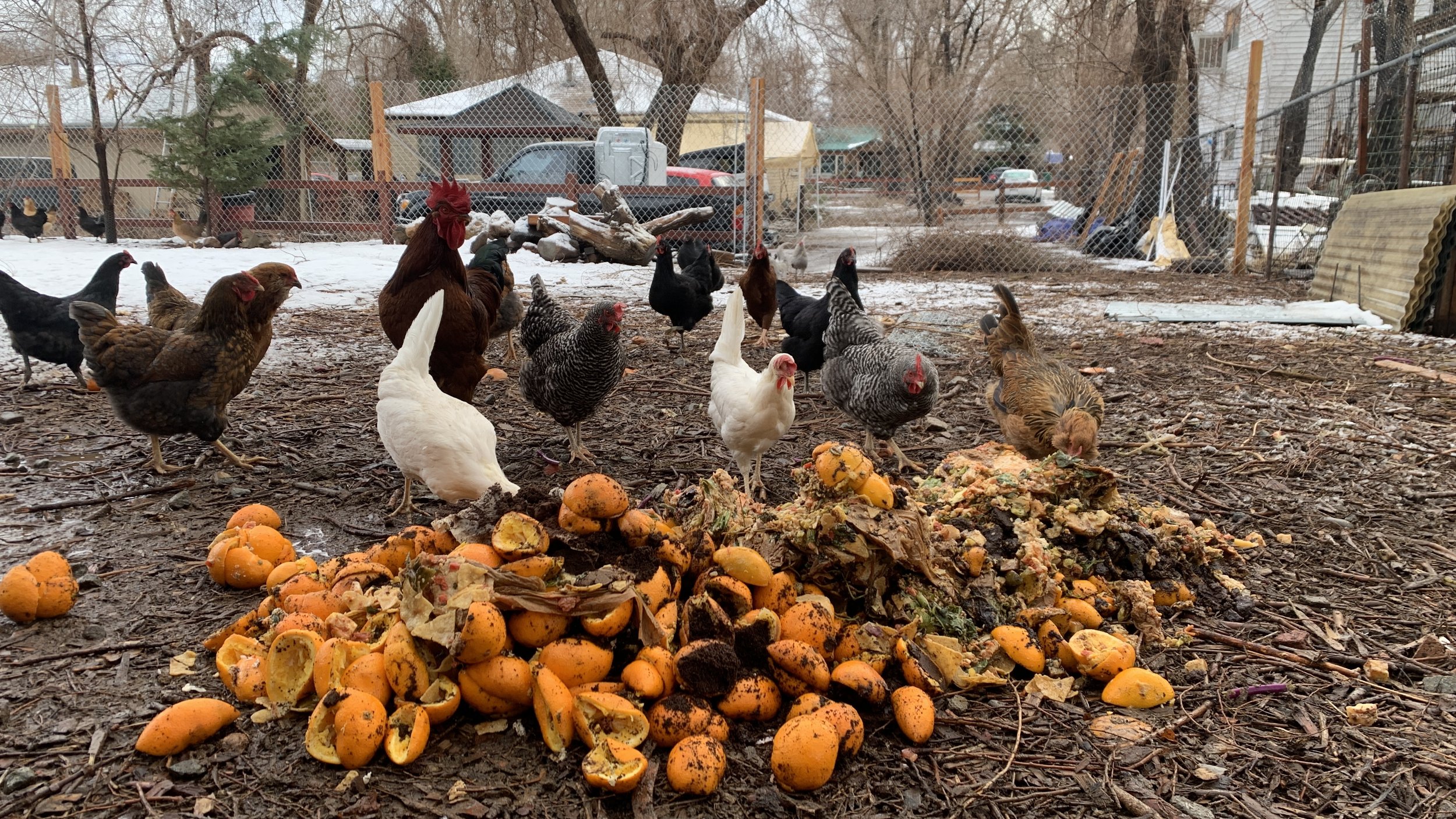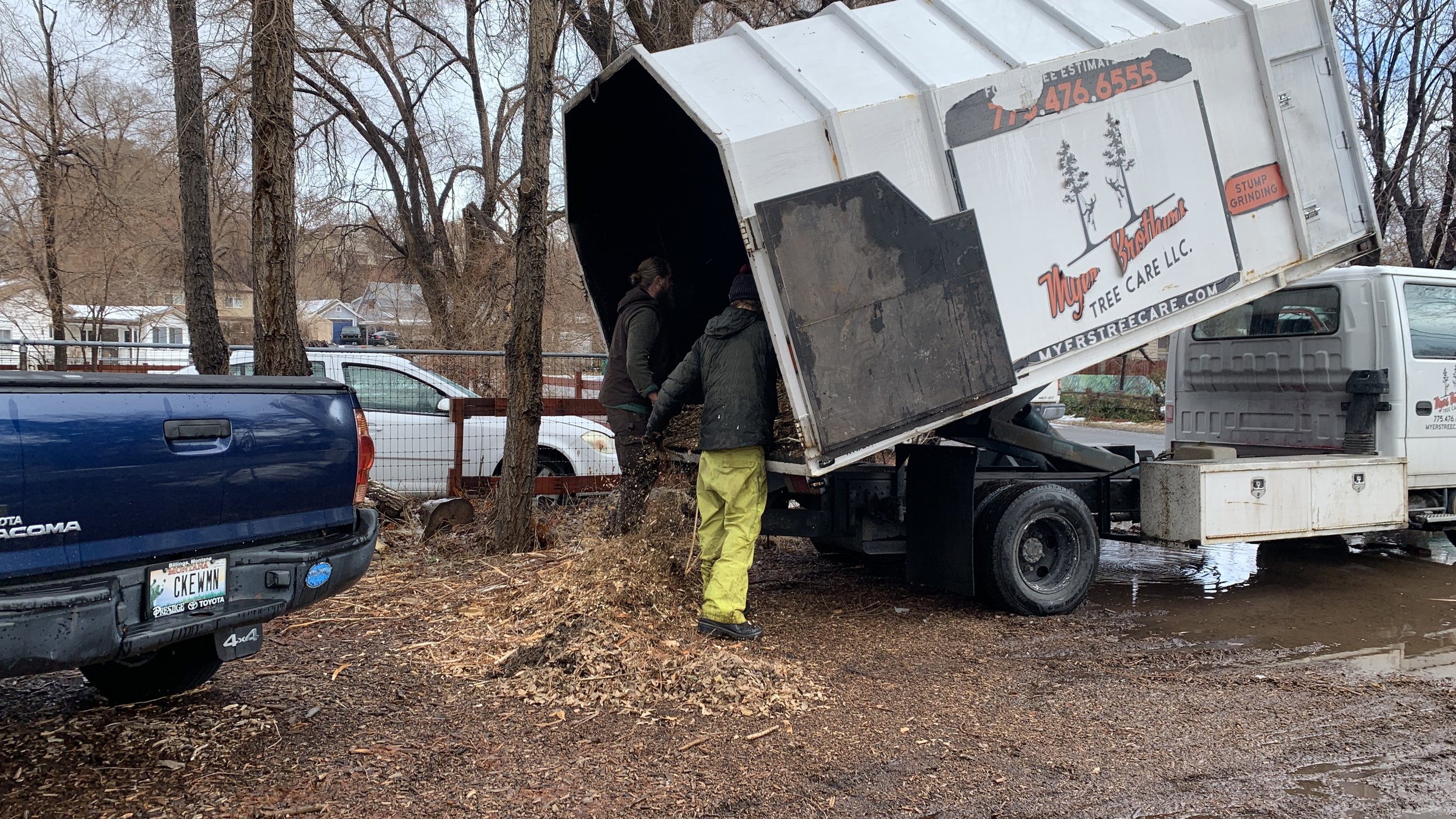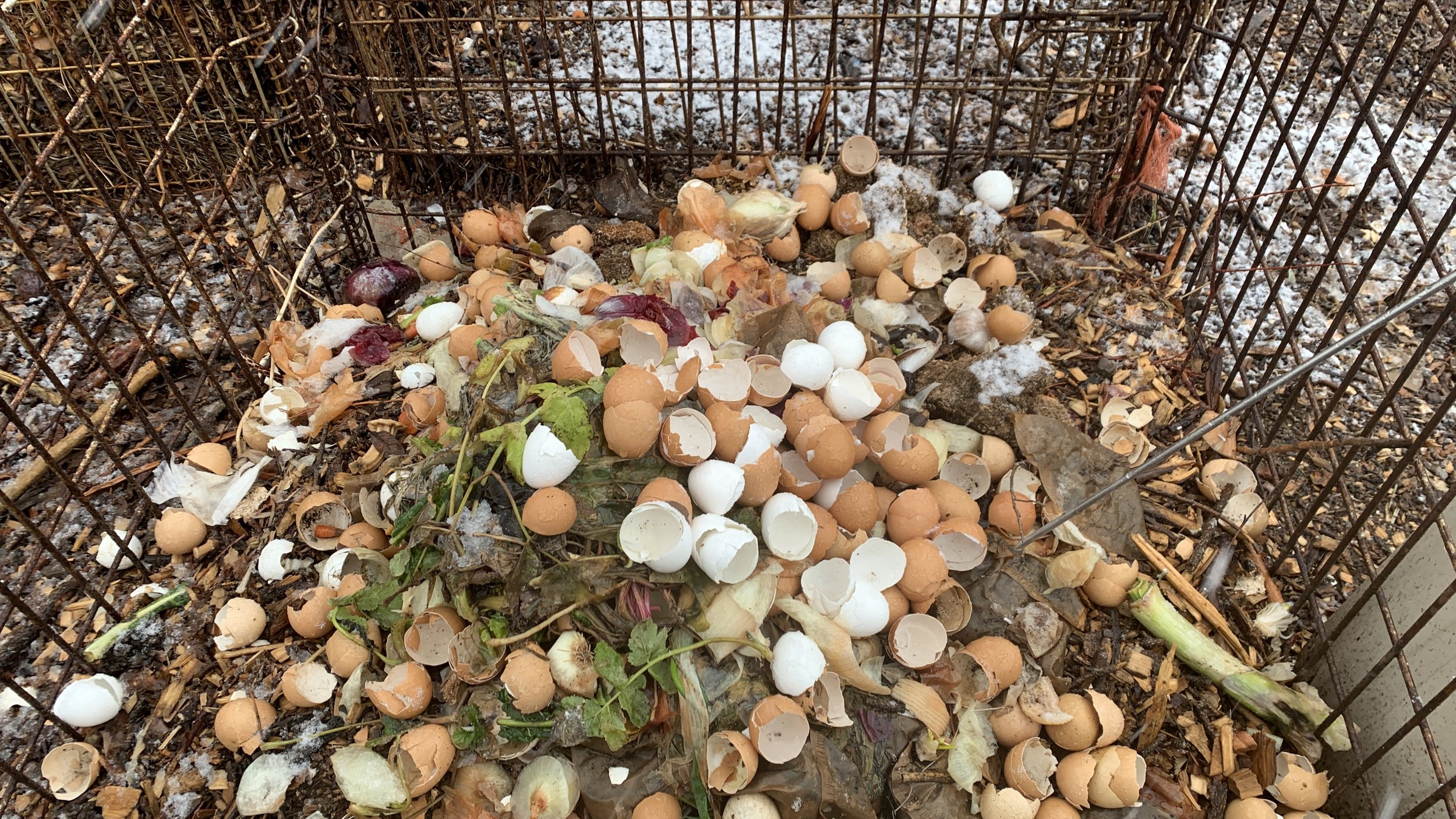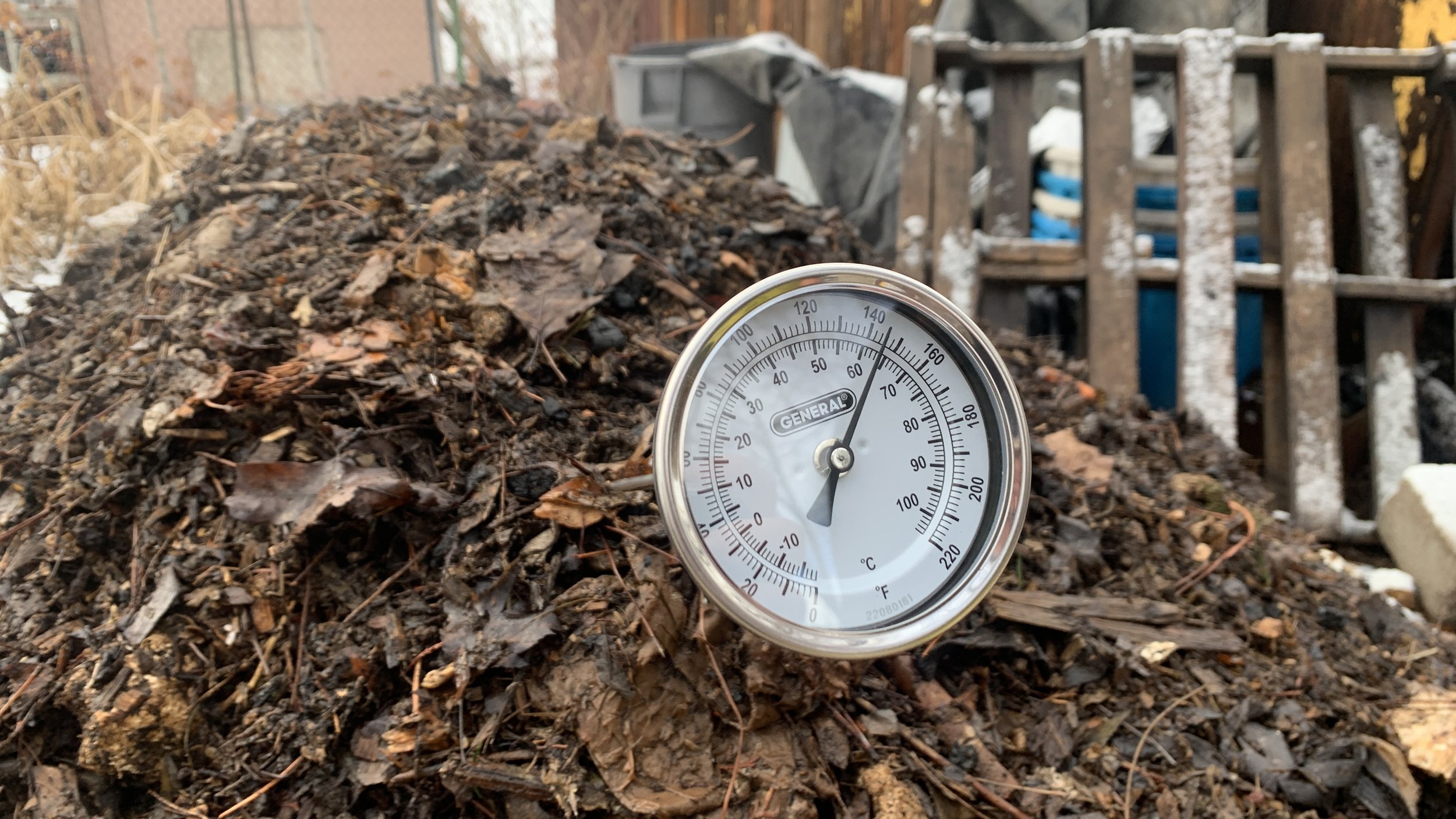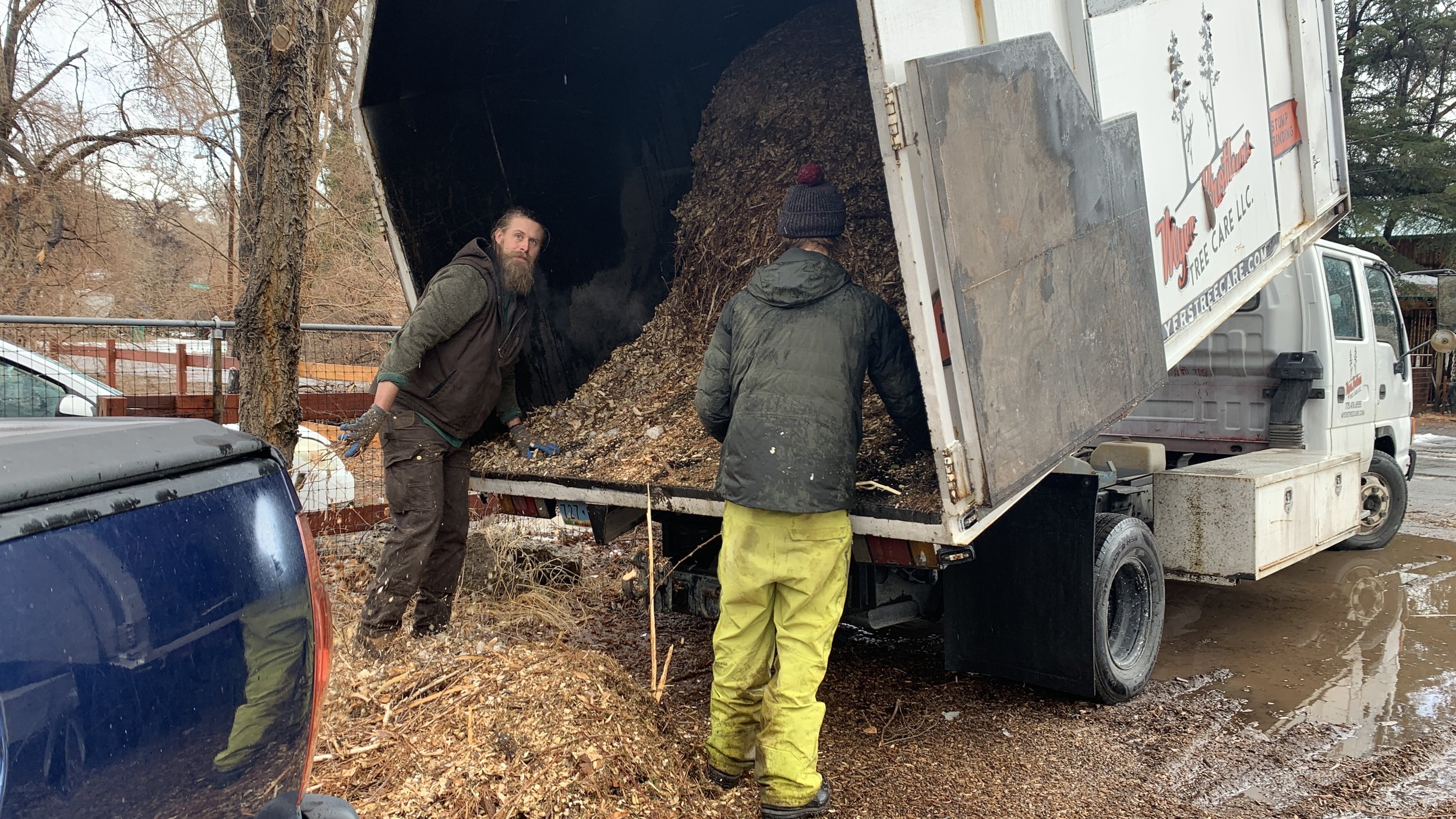Tanner Petrilla, 28, starts his Tuesday mornings by getting dirty, smelly, and wet. He’s not doing anything naughty, instead he’s improving Reno’s soil health by turning compost in the backyard of his community living space. Petrilla lives with three other people. One of them, Cynthia, works as a private chef and donates meals she makes on the weekends to local food access groups.
Tanner Petrilla collects eggs from his neighbors chickens in exchange for bringing over one of their favorite treats, food scraps.
Cynthia sets up her kitchen for the day, preparing food with nutritious and simple ingredients.
Petrilla has been living in this house for three years, moving out briefly to a small cabin/treehouse that was built on a nearby property, and then back. He previously managed the Desert Farming Initiative at the University of Nevada, Reno and now works part time as a carpenter and with Down To Earth Composting in Midtown.
On this snowy Tuesday, 100+lb bins of food scraps from local organic restaurants are wheeled through the mud and snow to feed the neighbor’s chickens.
Educating others on the importance of microbial activity in the soil is important to Petrilla, who frequently hosts composting parties at his house. At these work parties environmentally conscious locals can work in the yard turning compost, help him feed food scraps to the neighbor’s chickens, or simply observe.
Various chicken breeds sift through orange peels and coffee grounds in search of their next meal.
The chickens get first pickings of the food scraps and the leftovers, and what’s left is added into the next compost pile. Food scraps, coffee grounds, and grass clippings are “green” items that are high in nitrogen. When these are combined with “brown” items like paper and wood chips that are high in carbon, a controlled rot begins that forms compost.
“Hydration is essential,” says Petrilla who encourages gardeners to uncover their piles when there is rain and snow so the piles can absorb the available moisture. “[The compost] pile should stay at 50% moisture, meaning a drop of water will squeeze out of a handful of compost.”
One of Tanner’s experiments is a very relaxed compost pile where green and brown items are layered alternately and not turned. It forms compost much slower but requires little effort.
For better success in Reno’s high desert climate Petrilla suggests covering piles so moisture can be absorbed deep into the piles. Monitoring moisture and temperature is crucial to producing the best compost.
Petrilla checks to see if the compost is progressing properly or finished using a long thermometer placed in the center of the pile. When the compost is done the temperature drops and stays consistent.
Fungal activity is another crucial component of compost health as it breaks down complex woody materials, but it's the most sensitive to disturbance. Fungi relies on stillness to spread underground via threads and webs. But tilling and turning of the soil or compost piles can break these threads which slows down growth. Recent increased interest in soil health by at-home gardeners has popularized no till methods, which minimize disturbing the soil and maintain fungal webs.
Myers and Petrilla unload woodchips on Petrilla’s driveway, they must sit for around six months to mature before being added to compost. From these large woodchip dumps Petrilla provides more manageable amounts of wood chips to beginner composters.
Petrilla’s recommended compost recipe is:
6 parts wood material (wood chips, leaves) preferably 4 parts wood chips 2 parts leaves.
3 parts green (Food scraps, coffee counts here)
1 part hi nitrogen(manure, or can be substituted for 2 more parts green)
1 part finished compost ( imagine a sourdough starter or konmbucha scobee)
Optional
Spent mushroom blocks (add liberally)
Information on upcoming compost events can be found on Petrilla’s Instagram @activedecomposer
